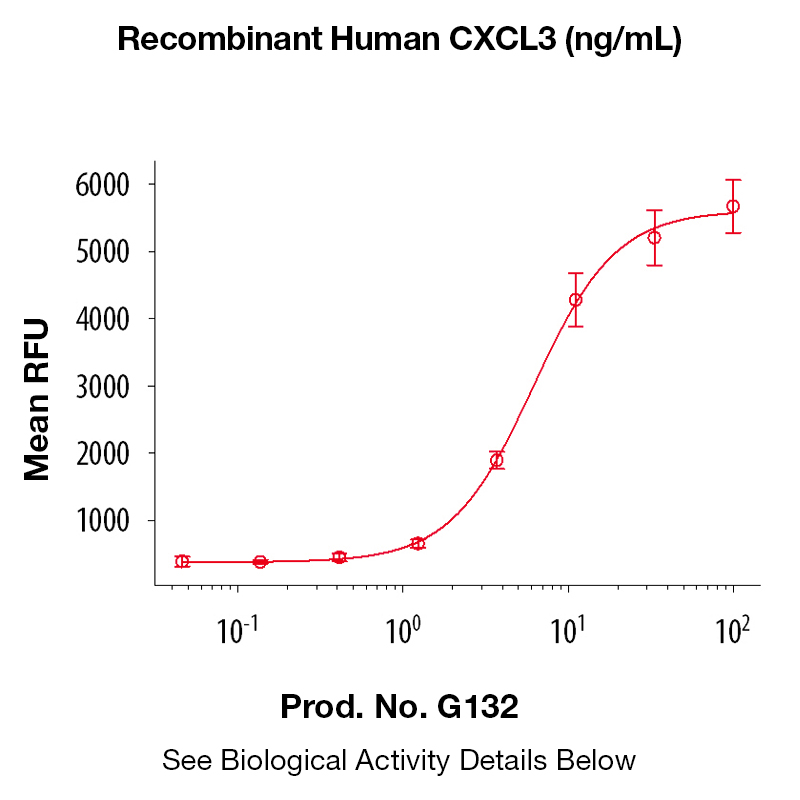Recombinant Human CXCL3
Data
- -
- -
BackgroundChemokine (C-X-C motif) ligand 2 (CXCL2) is an inducible murine chemokine involved in attraction of polymorphonuclear granulocytes to sites of infection.1 This chemokine is secreted by monocytes and macrophages and is chemotactic for hematopoietic stem cells.2,3,4 Protein DetailsPurity >97% by SDS-PAGE and analyzed by silver stain. Endotoxin Level <0.01EU/µg as determined by the LAL method Biological Activity The biological activity of Human GRO-gamma was determined by its ability to induce myeloperoxidase release from cytochalasin B treated neutrophils (Shröeder, J. et al., 1987, J. Immunol. 139:3474) or chemotaxis of BaF/3 hCXCR-2 transfected cells. The expected ED<sub>50</sub> for these effects are typically 0.1 - 0.3 μg/ml or 2 - 10 ng/ml, respectively. Protein Accession No. Amino Acid Sequence asvvte lrcqclqtlq gihlkniqsv nvrspgphca qteviatlkn gkkaclnpas pmvqkiieki lnkgstn N-terminal Sequence Analysis Ala35 State of Matter Lyophilized Predicted Molecular Mass The predicted molecular weight of Recombinant Human CXCL3 is Mr 8 kDa. Predicted Molecular Mass 8 Formulation This recombinant protein was lyophilized from a 0.2 μm filtered solution in 35% acetonitrile (CH3CN) and 0.1% trifluoroacetic acid (TFA). Storage and Stability This lyophilized protein is stable for six to twelve months when stored desiccated at -20°C to -70°C. After aseptic reconstitution, this protein may be stored at 2°C to 8°C for one month or at -20°C to -70°C in a manual defrost freezer. Avoid Repeated Freeze Thaw Cycles. See Product Insert for exact lot specific storage instructions. Country of Origin USA Shipping Next Day Ambient NCBI Gene Bank References & Citations1. Beuscher, HU. et al. (2004) International Immunol. 16: 1675 2. Cerami, A. et al. (1989) Proc Nat Acad Sci. 86: 612 3. Grotendorst, GR. et al. (1990) Mol Cell Biol. 10: 5596 4. Fukuda, S. et al. (2006) Exp Hematol. 34: 1010 Certificate of AnalysisIMPORTANT Use lot specific datasheet for all technical information pertaining to this recombinant protein. |
Related Products
- -
- -
Prod No. | Description |
|---|---|
G132 | |
C1343 | |
G709 | |
C1507 | |
C1508 |



